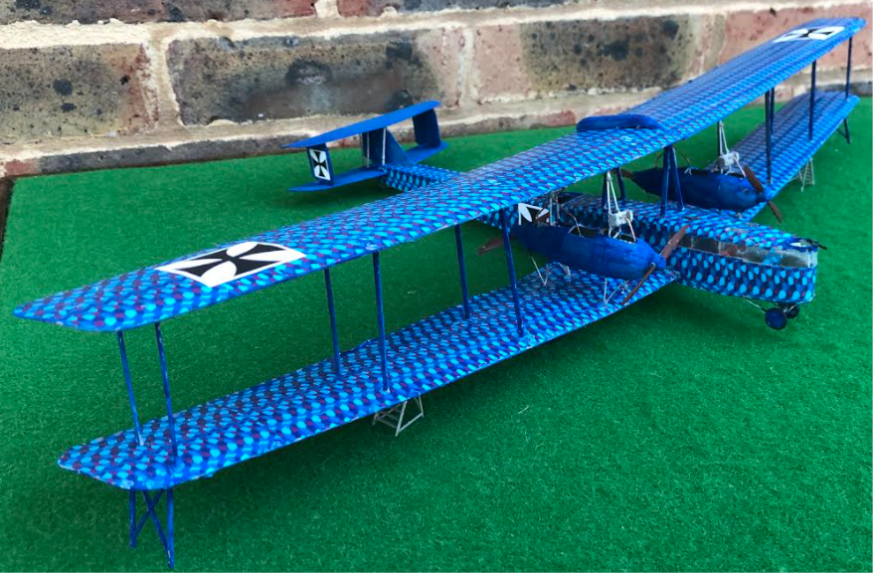Zeppelin-Staaken R.VI
The Zeppelin-Staaken R.VI was a four-engined German biplane strategic bomber of World War I, and the only Riesenflugzeug (“giant aircraft”) design built in any quantity. In September 1914, at the start of World War I, Ferdinand von Zeppelin visualised the concept of a Riesenflugzeug (R) bomber. Almost all of these Zeppelin-Staaken Riesenflugzeug designs used some variation of either pusher configuration and/or push-pull configuration in their engine layout, orientation and placement of their powerplants. The R.VI was the most numerous of the R-bombers built by Germany, and also among the earliest closed-cockpit military aircraft .
Each R.VI bomber required the support of a 50-man ground crew. The R.VI required a complex 18-wheel undercarriage consisting of twin nosewheels and a quartet of four-wheeled groupings for its main gear to support its weight, and carried two mechanics in flight, seated between the engines in open niches cut in the center of each nacelle. The bombs were carried in an internal bomb bay located under the central fuel tanks, with three racks each capable of holding seven bombs. The R.VI was capable of carrying the 1000 kg PuW bomb.
The Rfa 501 Bomber Group was transferred to Ghent, Belgium, to attack France and Great Britain, arriving September 22, 1917, at Sint-Denijs-Westrem airdrome. Rfa 501, with an average of five R.VI’s available for missions, conducted 11 raids on Great Britain between September 28, 1917, and May 20, 1918, dropping 27,190 kg of bombs in 30 sorties. Aircraft flew individually to their targets on moonlit nights, requesting directional bearings by radio after takeoff, then using the River Thames as a navigational landmark. Missions on the 340-mile round trip lasted seven hours. None were lost in combat over Great Britain (compared to 28 Gotha G bombers shot down over England), but two crashed returning to base in the dark.
ZEPPELIN-STAAKEN R.VI
Crew: 10 (commander, two pilots, two copilots, two radio operators, and fuel attendant in the cockpit, one mechanic in each engine nacelle)
Length: 22.1 m
Wingspan: 42.2 m
Powerplant: 4 × Mercedes D.IVa 6-cyl. water-cooled in-line piston engine 260 hp each or 4 × Maybach Mb.IVa high compression 6-cyl. water-cooled in-line piston engine, 245 hp each
Maximum speed: 135 km/h
Biggin Hill Connection
Formed part of the bomber raids on London – Defended by 141 Squadron Biggin Hill. 19-20 May 1918 raid involved 38 Gothas + 3 Zeppelin Staakan bombers.

